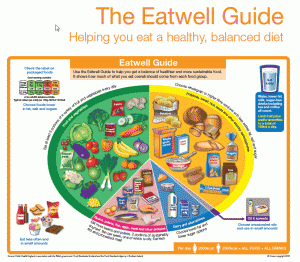Posted on January 05, 2018 by Kate Halsall
How many of you splurged a bit this Christmas? Who do you know who uses Christmas as an excuse to eat and drink what they like as they’ll “sort it in the new year”? Who was keen to get back to the gym, but not as keen to get on the scales? I guarantee it’s more than a few of you! So, what does a balanced diet look like…can you remember? If not, here’s a reminder. And to try and help you “get back on it”, a couple of tips on how to keep it that way.
If you’re one of our regular blog readers, we know you know this already. A balanced diet requires a mix of five key nutrient groups:
Macros (macronutrients)
- Protein – Animal Sources include meat, fish and eggs; plant based sources include soy beans, legumes and nuts; and there is also protein in some grains eg quinoa and wheatgerm
- Carbohydrate – rice, oats, fruit, vegetables
- Fats – olives, avocado, oily fish, seeds
Micronutrients (because no one calls these “Micros”!)
- Vitamins – A, D, E, K, B & C – from a variety of foods
- Minerals
When it comes to a balanced diet, the amount of any nutrient required varies significantly from person to person. The quality of those nutrient sources also needs to be considered when meal planning. The Eat Well Plate provides a good guide, as per the picture at the start of this blog. However, there are other things to consider too:
- Protein – the eatwell plate suggests 2 portions a day. You need to base these portions on the following:
- 0.8-2.0g per kg of bodyweight (lifestyle and goal dependant)
- “Complete Proteins” (contain 9 essential amino acids the body cannot synthesize itself), so you need to ensure you consume 1-2 of these products each day: eggs, meat, poultry, dairy, soy foods, buckwheat, quinoa
- Carbohydrates
- Choose unrefined carbohydrate sources as they contain high levels of dietary fibre, vitamins and minerals (which help to release the energy from some carbs) and antioxidants eg wholemeal or whole grains and pulses
- A variety of vitamins and minerals ensures a high nutrient densities which enables the body to function and perform at an optimum level. It will also help reduce damage caused by exercising.
- Eat regularly – some studies suggest that eating irregularly can not only disrupt our internal body clocks (digestion and metabolism of fat and sugars for example), but can also be linked to risk of metabolic syndrome (high blood pressure, obesity and type 2 diabetes).
So how can you stick to a balanced diet?
- Will Power – this isn’t easy! If you know you have a weakness for certain unhealthy foods, don’t bring them into the house – you can’t be tempted if they’re not there!
- Plan your meals – not only does this dictate your shopping list (which helps to reinforce the above), but it also brings in portion control and food prep
- Support – the people who live and eat with you should support you! Get everyone to help with this
- Instagram – who doesn’t love seeing pictures of other people’s food on social media – especially when it looks good! Not only are you publicly announcing your intentions to eat a healthier diet, but you’re showing off your skills!
Now, what does a salad look like again???


